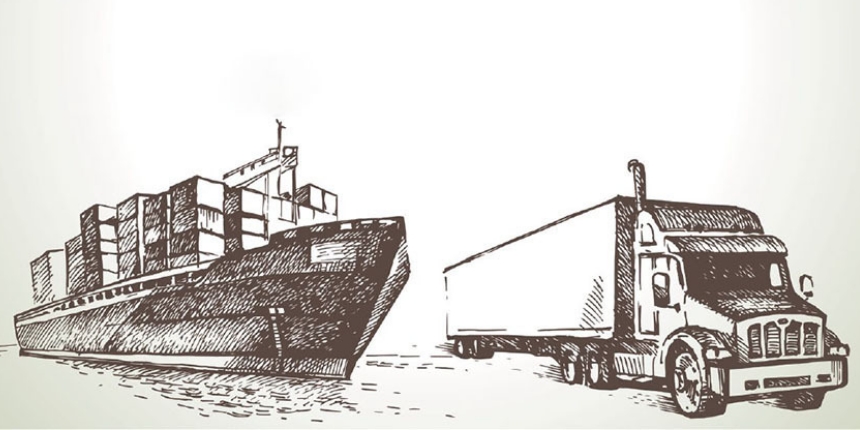Celebrating the Industry on National Logistics Day

There seems to be a “National Day” for about everything under the sun and that is ok because who doesn’t love celebrating key dates in history, industries and holidays. So, in 2019, TIA member Logistics Plus in Erie, Pa., decided that the logistics industry should also get its day in the sun. Working with National Day Calendar – a national holiday registration company – they wanted to create a day of celebration for all the great jobs and essential services our industry provides, thus we now celebrate National Logistics Day on June 28 annually.

We can trace our history to more than 750 years ago, when the logistics industry first started to take shape after Marco Polo journeyed to China on the Silk Road and kept a detailed written record, paving the way for future traders and merchants traveling between Europe and China. In 1896, the first horseless carriage semi-truck was invented, improving the way goods moved across the United States. The first “air cargo” flight took place in 1910 between Dayton and Columbus, increasing the speed with which goods could be delivered. In 1956, the first container ship sailed from the port of New Jersey to Texas, forever changing how goods would move around the world. And that’s how early logistics started, demonstrating how logistics connects the world and always will. In 2022, our logistics industry helped move 21.2 billion packages via roads, rails, seaways, and through the air so that American consumers could receive the products they need and enjoy. In 2023, 356 billion packages were shipped around the world. Those are some pretty impressive numbers given our humble start in 1271! Today, the logistics industry literally touches every industry you can possibly think of in moving parts and supplies, ensuring lifesaving medicine and food get to where it needs to go in a timely and efficient manner and all the Amazon boxes that arrive daily at homes around the world (mine included!)
Today, the U.S. logistics industry is worth $343 billion. Around the world it is worth $1.3 trillion, with projected growth to reach $2.8 trillion by 2031.
We have a lot to celebrate when it comes to our industry. We are the unsung heroes, the wizards behind the curtain, scheduling, tracking and ensuring products move from point A to B. Here are some stats that put our industry and the supply chain into perspective in a global economy.
Today, the U.S. logistics industry is worth $343 billion. Around the world it is worth $1.3 trillion, with projected growth to reach $2.8 trillion by 2031. According to Armstrong & Associates, 90 percent of Fortune 500 companies work with 3PLs to move their goods.

To make all this happen, you need manpower. According to the Bureau of Labor & Statistics, the Transportation & Warehouse sector employs 6.6 million people. To put that in context, we employ more people than the population of Denmark, which only has 5.8 million residents.
With these kinds of stats, one could surmise that the logistics industry is alive and well. With more than 27,0000 companies registered as 3PLs, according to the Federal Motor Carrier Administration, we are indeed an important cog in the world’s movement of goods.
However, like most industries in the 21st century, we are experiencing growing pains. According to Yahoo! Finance, today’s 3PL deals with rising costs; a changing shipping landscape; modern fulfillment challenges around the world because of world events – manmade and natural; and embracing technology while not being victimized by it at the same time.
Let’s break down the challenges and how to turn them into business opportunities.

The Rising Cost of Doing Business
Arguably the most alarming trend in global economics overall is the persistent rising costs of everyday life. Everything is more expensive than it used to be, and consumers and business owners alike can feel the pressure this creates on their wallets.
What can we do to stay afloat during turbulent times? Diversify your revenue streams. Explore new services, verticals or markets to diversify revenue sources. This could include expanding into new geographical areas or offering in-demand value-added services.
Navigating the Shipping Landscape Chaos
The rapid rise of parcel shipping as a key mode of transportation following the pandemic-fueled ecommerce boom was quite unexpected. Simply put, no one—particularly any of the carriers—was equipped to handle the drastic increase in parcel volume, and they have struggled to catch up ever since, creating a shipping landscape defined by chaos.
How could one lessen the impact of post-pandemic fluctuations in the shipping industry? Consider expanding and diversifying your carriers. Multicarrier shipping strategies are critical for risk mitigation and obtaining leverage for negotiating carrier rates. A “one size fits all” carrier and shipping strategy limits your customers’ ability to control their shipping costs while maintaining a high level of customer service.

Exploring the Geographic Spread Of Modern Fulfillment
Striving to mitigate the threat of supply chain disruption while optimizing logistics costs calls for rethinking the geographic spread of modern fulfillment on both an international scale and throughout North America. Even for 3PLs focused on domestic operations, major global current events – wars, route disruptions, regulatory mandates – will influence approaches to both expansion and risk mitigation.
The best piece of advice would be to study the market. If you want to expand into multi-modal, geographically dispersed operations, you must understand the market(s) you want to join. Adapting to regional market differences will enable you to customize services accordingly and (most importantly) make informed decisions about how you disperse inventory across locations.
Embracing Cutting Edge (Software) Technologies
The opportunities for efficiency gains, cost reduction and enhanced customer satisfaction that come with the adoption of artificial intelligence (AI) and machine learning (ML) are immense. By harnessing their power, 3PL providers can transform challenges into opportunities, driving innovation and excellence in their operations.
If you want to expand into multi-modal, geographically dispersed operations, you must understand the market(s) you want to join.
Start learning about technological advances now. Even if the technology you have now does not have any AI-powered functionality yet, it will soon. Or you may be considering switching to a software platform that does. In any case, to enter the world of AI, you need data to start the ML process; collecting that data now will make this adoption smoother and quicker.
Caution! Just as you are learning and adapting to new technologies, so are criminals. You need to stay on top of technological advances and work with people who know how to navigate you through potential pitfalls that open you up to fraud and theft.
As they say, with challenges comes opportunity. As the 3PL industry celebrates our success and innovation during National Logistics Day and beyond, consider the longevity of this industry. From the storied days of Marco Polo to today when packages can arrive the same day they are purchased, we truly are the center of the supply chain. While times have changed and so have our processes, we have become a more robust industry poised to grow even bigger than we are today.

